While researching Prince of Wales Island (now called Penang) for the sequel to Ice King (aka Triangle Trade) I came across details of the German cruiser SMS Emden, which had links to Penang.

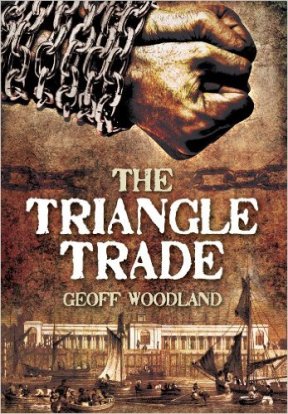
Maureen often says that I am more interested in the research than the act of writing, which to an extent is correct. Little things started to come together so I thought – how about a blog.

Karl Friedrich Max von Müller was the son of a German colonel in the Prussian army.
In 1913, at the age of forty, he became a captain in the Imperial German Navy and took command of the light cruiser SMS Emden.
 He was posted to the China station and using his initiative he shelled Nanking, because it was in rebellion. For this action he was awarded the Order of the Royal Crown. (Third class).
He was posted to the China station and using his initiative he shelled Nanking, because it was in rebellion. For this action he was awarded the Order of the Royal Crown. (Third class).
 On the brink of WW1 the Emden was anchored at Tsingtao, which was a German naval base in China. I sailed in to Tsingtao in 1963, and it was still a naval base then, but this time for the Chinese.
On the brink of WW1 the Emden was anchored at Tsingtao, which was a German naval base in China. I sailed in to Tsingtao in 1963, and it was still a naval base then, but this time for the Chinese.
Von Muller took the Emden to sea on the evening of the 31st July, 1914.
On the 4th August Emden captured the Russian mail ship Rjasan, which was the first vessel to be captured by the German Imperial Navy in WW1.
The Emden met up with the German East Asia Squadron commanded by Maximilian Reichsgraf von Spee who had decided to take his squadron across the Pacific and around Cape Horn in to the Atlantic.
Von Muller persuaded the Admiral to allow a loan raider to attack merchant ships in the Indian Ocean – the Admiral agreed.
As an aside Maximilian Reichsgraf von Spee defeated the British 4th cruiser squadron at the Battle of Coronel in November 1914. A month later he decided to attack the Royal Navy at the Falkland Islands, but the British surprised him and his squadron was destroyed. He was killed as were his two sons (serving in other ships of the squadron.)
In Germany he was considered a hero and several ships were named after him, including the ‘pocket battleship’ Admiral Graf Spee, which was scuttled after the Battle of the River Plate in December 1939.
 Admiral Graf Spee
Admiral Graf Spee
Back to SMS Emden – in the next three month Von Muller captured fourteen merchant ships, and became known as an honorable enemy of the allies. He was daring and did his best not to cause injury to civilians. His attacks required the British to stop merchant ships sailing between Singapore and India.
The British tactics reduced the targets for the Emden, so in September 1914 Von Muller sailed in to Madras harbor at night (now called Chennai) and attacked the oil tanks.
 Within thirty minutes the oil tanks were ablaze and causing explosion that damaged vessels in the harbor. SMS Emden sailed before the harbour defense guns could train on the raider.
Within thirty minutes the oil tanks were ablaze and causing explosion that damaged vessels in the harbor. SMS Emden sailed before the harbour defense guns could train on the raider.
The following days she added six more vessel to her score.
On the 16th September 1914 the Royal Navy in Singapore advised the Admiralty, London, that they were sending HMS Yarmouth and HMS Hampshire to hunt down the Emden.
 HMS Yarmouth – note the number of funnels.
HMS Yarmouth – note the number of funnels.
In the mean time SMS Emden added a false funnel to disguise herself as HMS Yarmouth.
 SMS Emden photo taken in 1911 in Tsingtao.
SMS Emden photo taken in 1911 in Tsingtao.
SMS Emden approached Penang harbour at 4.30 am on the night of the 28th October 1914.
Its silhouette, with the fourth false funnel, gave the impression that HMS Yarmouth, was coming in to port, but once in the harbor, and before he opened fire, Von Muller ran up the Imperial German Navy battle flag.

He spotted the Russian cruiser Zhemchug at anchor. She was in Penang for repairs to her boilers.
SMS Emden opened fire at three hundred yards (270 mtrs) by firing a torpedo, and followed this with gun fire. The torpedo and the gun fire struck the Russian, and she was soon on fire. Von Muller ordered a second torpedo, which hit the Russian’s ammunition causing a huge explosion as she sank.

Russian cruiser Zhemchug.
 A German postcard of the battle.
A German postcard of the battle.
A French cruiser and destroyer opened fire on the Emden, but they were inaccurate. The firing was enough for Von Muller to order the Emden to retreat.
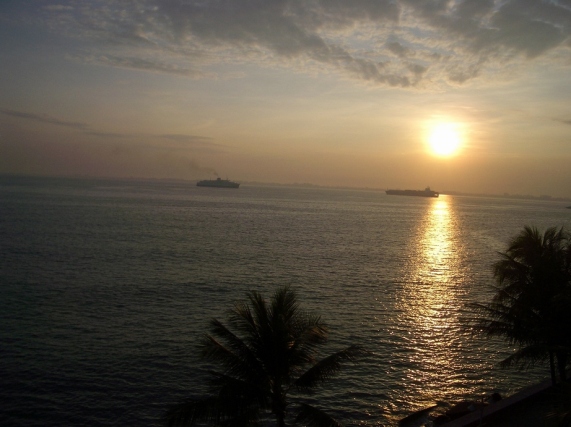
A newspaper reporter from the New York Times wrote that she watched the battle of Penang from near the hotel, which would have been the Eastern & Oriental Hotel, where Maureen & I have stayed. I took the above photograph when at the hotel, which shows the entrance to Penang harbour. The anchorage is to the right of the picture, where the battle would have taken place.
The map below is from the report of the New York Times correspondent who witnessed the battle.
At this time, 1914, the USA was still neutral, they didn’t become involved until 7 th December, 1917, which is ironic considering the 7th December in 1941.

On leaving the harbor the Emden spotted the French destroyer Mousquet, which was coming off patrol and unaware of the Emden’s attack on Penang.

Postcard of the French destroyer Mousquet.
Von Muller opened fire and sank the Frenchman, after which he rescued thirty five sailors and one officer from the water. He later stopped a British cargo vessel SS Newburn and instead of sinking her he handed over the French survivors on the understanding that the Newburn would take them to a neutral port in Dutch Indonesia and that they would no longer be involved in the war.

I took the above picture from the Eastern & Oriental Hotel. I think the area to the left of ship in the photograph would have been close to where the Mousquet and the Emden fought their battle.
SMS Emden sailed south to re-coal from her captured British ship Buresk after which she headed for the Cocos Islands. Von Muller wanted to destroy the radio station, in the hope that this would cause the British and Australian navies to leave the Indian Ocean to protect their line of communications.
On the night of the 8/9 th November Von Muller arrived at the Cocos Islands and sent a shore party to disable the wireless and the undersea cables. Fortunately the station staff had seen the Emden and managed to get off a message that they had seen a strange ship, before the Emden jammed their transmissions.
A convoy of Australian troops ships was not too far away, and the allied commander ordered HMAS Sydney to investigate.
 HMAS Sydney
HMAS Sydney
As the Sydney approached the Cocos Island the Emden opened fire and scored hits on the Sydney with her fourth salvo.
The Australian ship replied with her heavier guns and soon the SMS Emden was so damaged that Von Muller decided to beach her on North Keeling Island to save the lives of his men.
 The Imperial ensign still flew over the beached ship, she had not formally surrendered. Captain Glossop of the Sydney signaled a number different ways, including plain language because he knew that the Emden’s code books had been thrown overboard, to try and see if the Emden was ready to surrender. The Sydney fired again and hit the stricken ship before the ensign was pulled down and white sheets hung over the side. The Germans burnt their ensign rather than allowing it to fall in to the hands of the enemy.
The Imperial ensign still flew over the beached ship, she had not formally surrendered. Captain Glossop of the Sydney signaled a number different ways, including plain language because he knew that the Emden’s code books had been thrown overboard, to try and see if the Emden was ready to surrender. The Sydney fired again and hit the stricken ship before the ensign was pulled down and white sheets hung over the side. The Germans burnt their ensign rather than allowing it to fall in to the hands of the enemy.
Captain Von Muller had captured twenty seven ships for the loss of one civilian life.
Karl Friedrich Max von Müller was captured and ended up in a PoW camp in England. Earlier in his career he had been attached to the East Africa Squadron where he suffered from malaria. The climate in England didn’t agree with the malaria, so he was sent to Holland, under compassionate grounds, as an exchange prisoner, for treatment. In October 1918 he was repatriated to Germany – the war ended in November.
Von Muller was awarded Pour le Mérite (For Merit) (also known as The Blue Max)
 This was awarded to particular people for excellent service in the military. The military version of the award was stopped in 1918, but the civilian award is still in use – similar to the British OBE
This was awarded to particular people for excellent service in the military. The military version of the award was stopped in 1918, but the civilian award is still in use – similar to the British OBE
Karl Friedrich Max von Muller died suddenly in 1923 at the age of fifty – weakened by malaria.
Swan of the East was a nick name given to the ship in Tsingtao, because of her sleek lines.
 One of the Emden’s guns can be seen in Hyde Park in Sydney
One of the Emden’s guns can be seen in Hyde Park in Sydney

HMAS Sydney’s mast can be seen when taking the ferry from Circular Quay to Manly – it is on the north shore of Sydney harbour.
All of the photographs, except for the two that I took, have been taken from the internet to illustrate a paragraph etc.







 After seeing a number of elephant ‘eggs’ at Jennifer’s crossing point a cleansing ale or two was needed to make sure that we didn’t catch anything from the splashes etc . . . .
After seeing a number of elephant ‘eggs’ at Jennifer’s crossing point a cleansing ale or two was needed to make sure that we didn’t catch anything from the splashes etc . . . .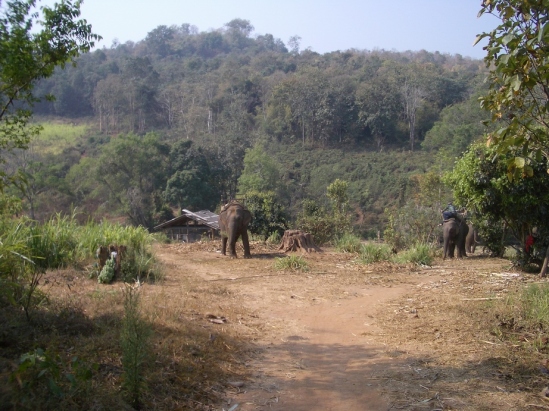


 Jennifer was quite happy now that she was out of the river.
Jennifer was quite happy now that she was out of the river.


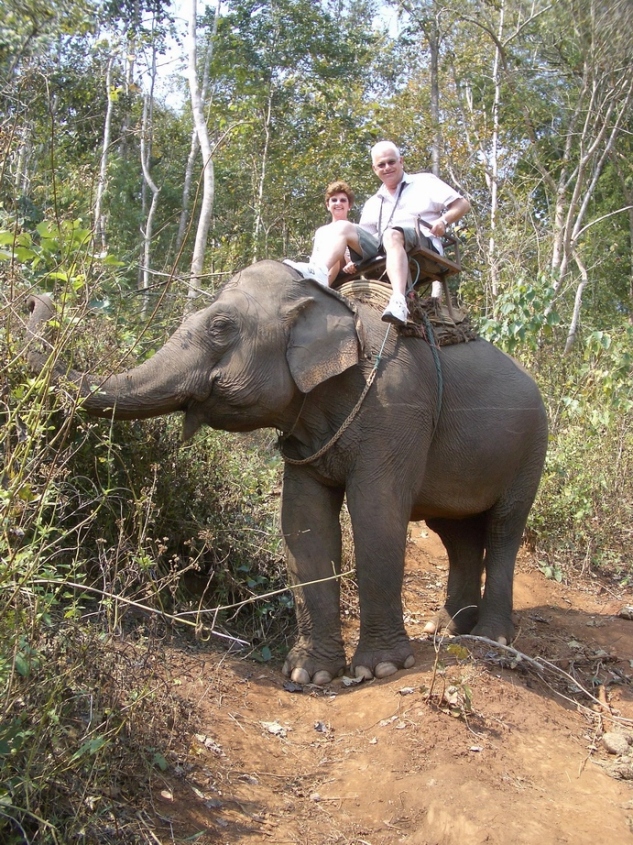
 don’t bother peeling them I like green bananas . . .
don’t bother peeling them I like green bananas . . .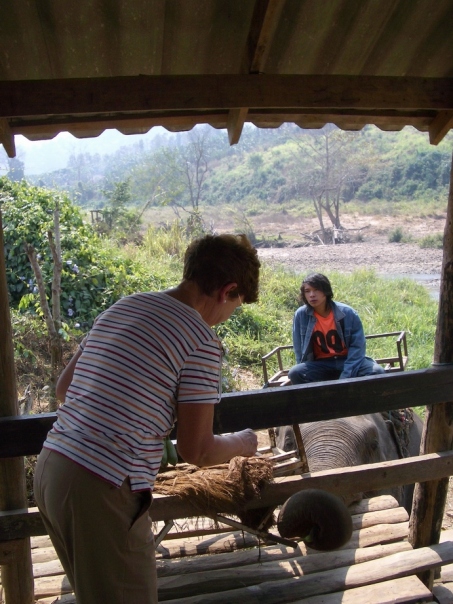 Maureen talking to Jennifer, while offering bananas, the problem was Jennifer didn’t understand English – she was tongue Thai’d . . . (they get worse as I get older).
Maureen talking to Jennifer, while offering bananas, the problem was Jennifer didn’t understand English – she was tongue Thai’d . . . (they get worse as I get older). Where there is faith there is light and strength
Where there is faith there is light and strength Main entrance to the park.
Main entrance to the park.


 Central Park NY
Central Park NY Boat lake Central Park
Boat lake Central Park

 Nemesis, (Goddess of retribution).
Nemesis, (Goddess of retribution). Nemesis wreaked havoc amongst the wooden junks of the Chinese navy during the First Opium War. The first rocket that she fired hit a large junk and caused it to blow up with a huge explosion. The Chinese did not stand a chance against such modern weapons.
Nemesis wreaked havoc amongst the wooden junks of the Chinese navy during the First Opium War. The first rocket that she fired hit a large junk and caused it to blow up with a huge explosion. The Chinese did not stand a chance against such modern weapons. HMS Birkenhead
HMS Birkenhead
 CSS Alabama
CSS Alabama Her moto was – ‘God helps those who help themselves.’
Her moto was – ‘God helps those who help themselves.’

 Her stern is towards Rock Ferry and her bow points to New Ferry, although many comments state that she was broken up at New Ferry.
Her stern is towards Rock Ferry and her bow points to New Ferry, although many comments state that she was broken up at New Ferry.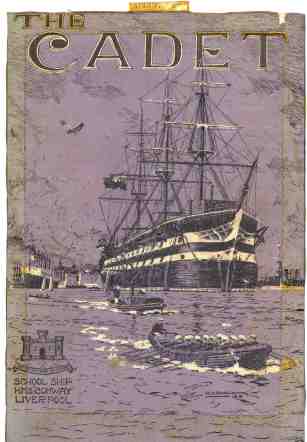
 The Birkenhead war memorial in Hamilton Square has my uncle’s name inscribed up on it – he is buried a short distance outside Ypres in Belgium, having been killed in action in 1917 – he was nineteen.
The Birkenhead war memorial in Hamilton Square has my uncle’s name inscribed up on it – he is buried a short distance outside Ypres in Belgium, having been killed in action in 1917 – he was nineteen.
 He signed up at seventeen, and just before he left, he and his parents visited a show for the troops. It was held at a theatre across the road from the main entrance to Birkenhead Park. I believe my father would have been with them – he would have been six years old at the time.
He signed up at seventeen, and just before he left, he and his parents visited a show for the troops. It was held at a theatre across the road from the main entrance to Birkenhead Park. I believe my father would have been with them – he would have been six years old at the time. Opening day for the park in 1847.
Opening day for the park in 1847.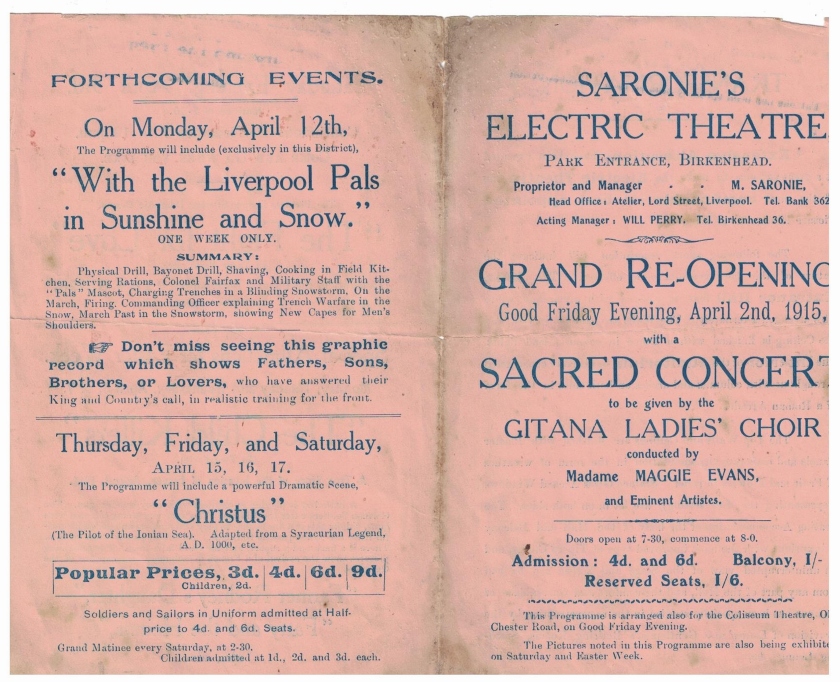


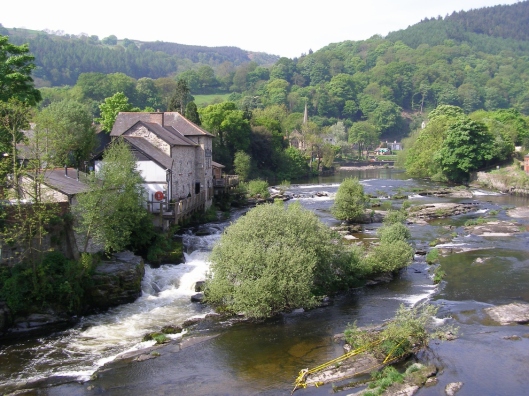 The river in both pictures is the River Dee that flows, via Chester, in to the Irish Sea.
The river in both pictures is the River Dee that flows, via Chester, in to the Irish Sea.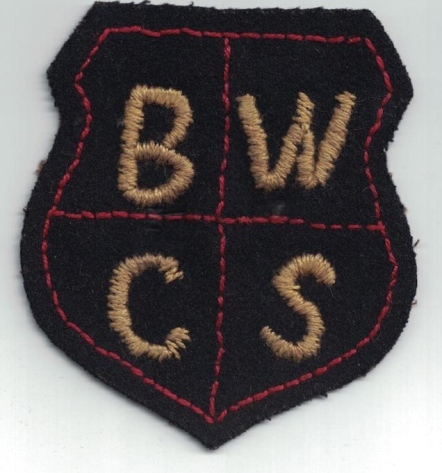 The badge off my mother’s ‘uniform’ for the competition.
The badge off my mother’s ‘uniform’ for the competition.

 The other interesting point about Llangollen is that it is not all that far to Pontcysyllte Aqueduct, which is down river from the town.
The other interesting point about Llangollen is that it is not all that far to Pontcysyllte Aqueduct, which is down river from the town. It is not a railway bridge but a canal on piers to carry the water and the canal boats over the River Dee. There are 18 arches, the canal is cast iron, it took ten years to build, it was opened in 1805, and it is 126 ft (38 mtrs) high, which makes it the highest navigable aqueduct canal in the world. The above picture is off the internet.
It is not a railway bridge but a canal on piers to carry the water and the canal boats over the River Dee. There are 18 arches, the canal is cast iron, it took ten years to build, it was opened in 1805, and it is 126 ft (38 mtrs) high, which makes it the highest navigable aqueduct canal in the world. The above picture is off the internet. From the beginning of the ‘bridge canal’.
From the beginning of the ‘bridge canal’.






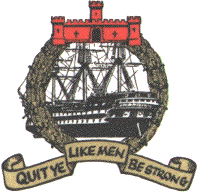

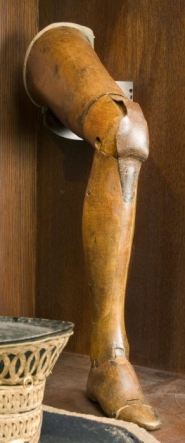
 It is painted trompe-l’oeil, which means that the scene changes as you walk the length of the painting.
It is painted trompe-l’oeil, which means that the scene changes as you walk the length of the painting. Plas Newydd, Llangollen, about 1840
Plas Newydd, Llangollen, about 1840
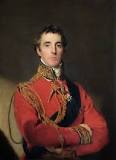 Duke of Wellington
Duke of Wellington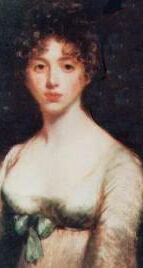





 Little Orme – picture taken from the Great Orme.
Little Orme – picture taken from the Great Orme.



 Everyone seemed to know Turpin’s name even the people who didn’t have any interest in boxing.
Everyone seemed to know Turpin’s name even the people who didn’t have any interest in boxing.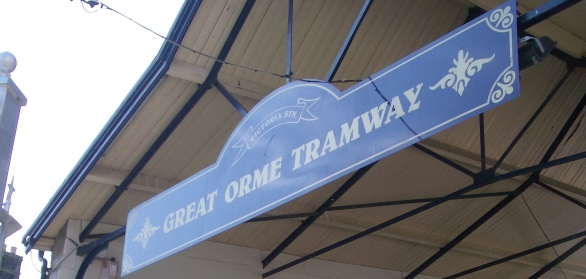





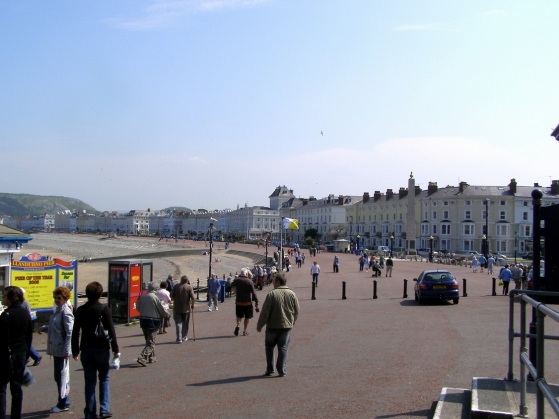

 Llandudno pier is at the bottom of the picture.
Llandudno pier is at the bottom of the picture.
 Entrance to the pier.
Entrance to the pier.


 his parents were Welsh, although he was born in London. He was seven when his mother died and he was sent to live with his Aunt in Llandudno until he was 14, after which he moved back to London. He emigrated to Austraia in 1884 at the age of twenty two.
his parents were Welsh, although he was born in London. He was seven when his mother died and he was sent to live with his Aunt in Llandudno until he was 14, after which he moved back to London. He emigrated to Austraia in 1884 at the age of twenty two.
 Alice Liddell.
Alice Liddell.


 The cover that we all know from the Disney studios.
The cover that we all know from the Disney studios.